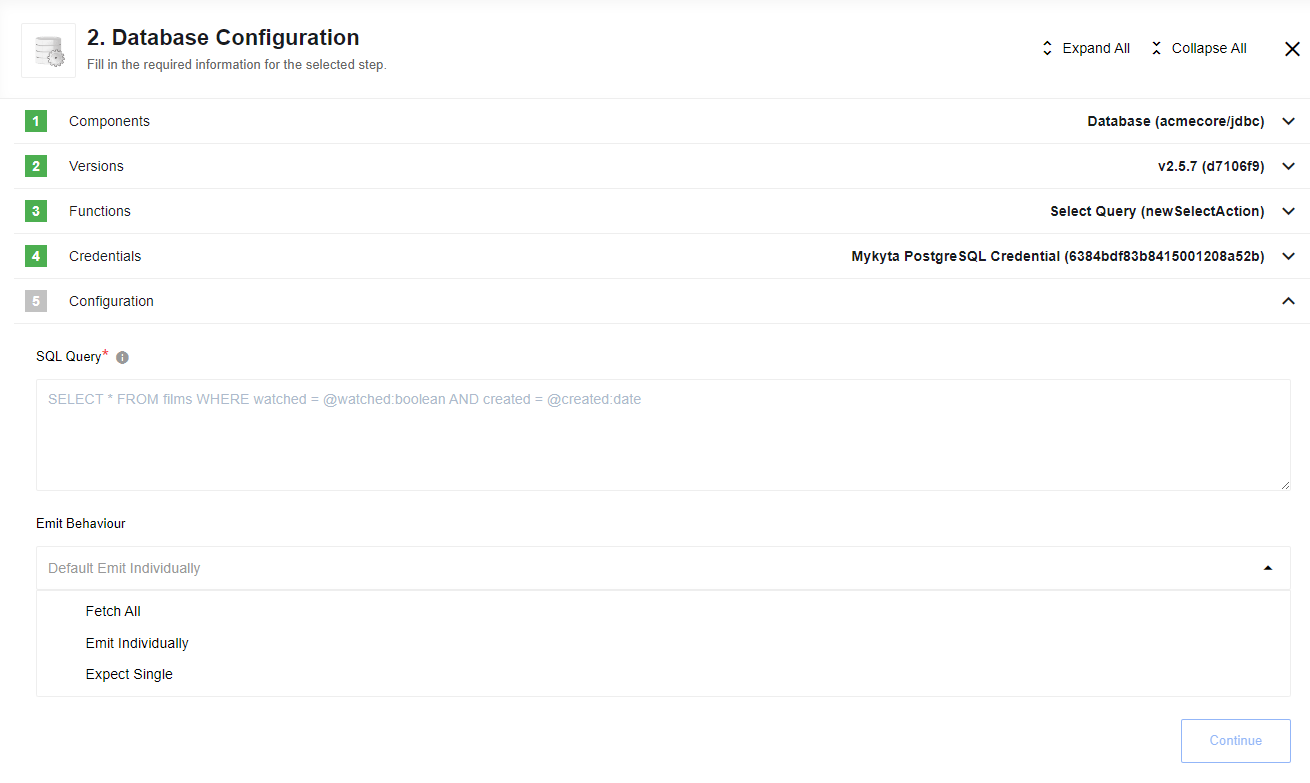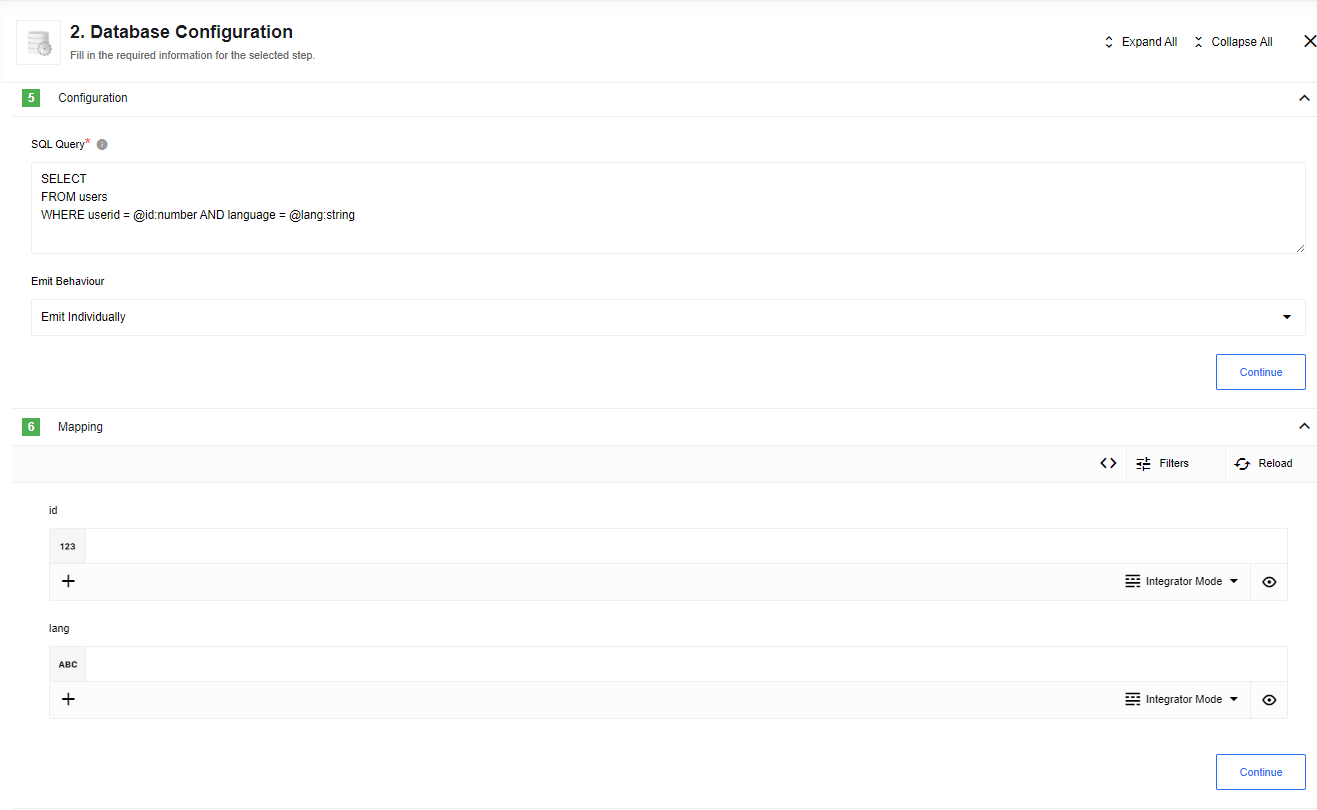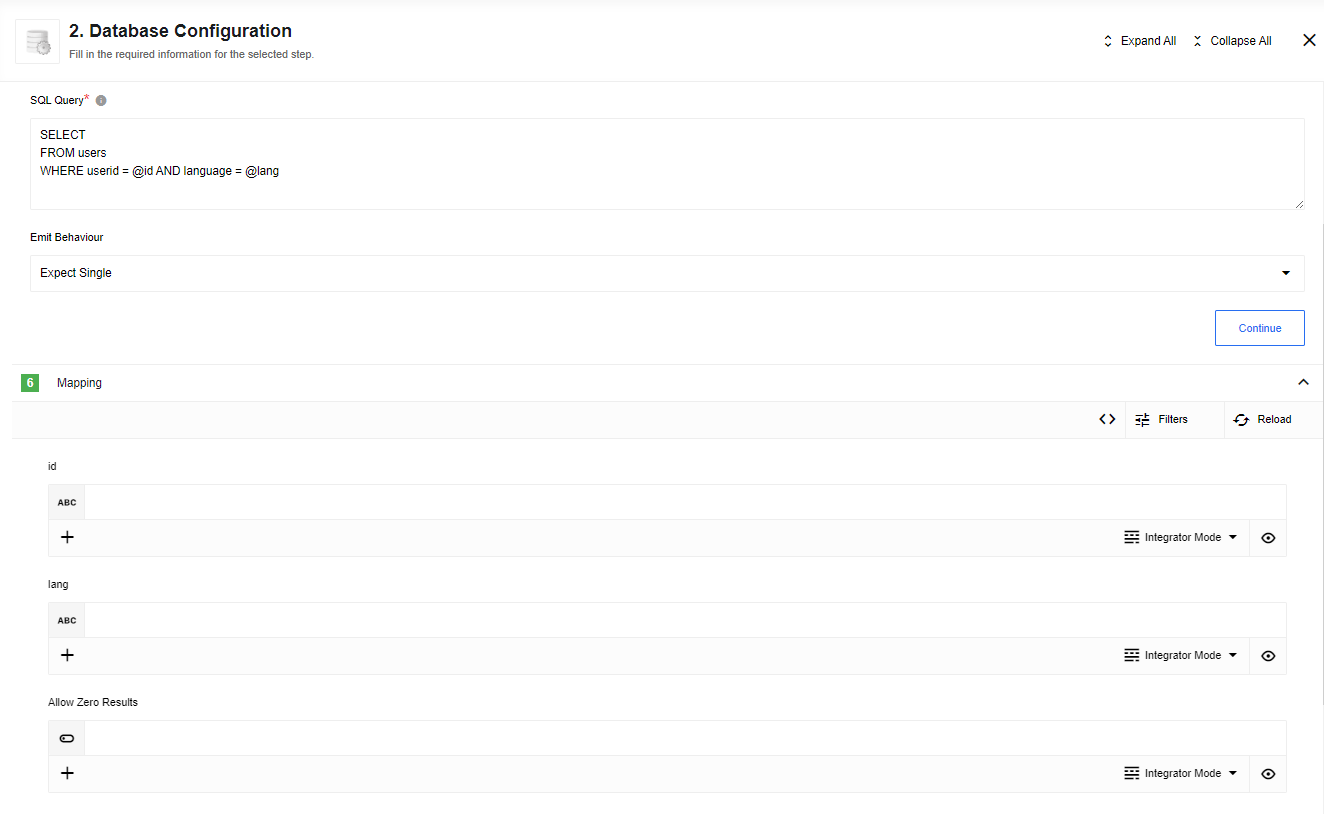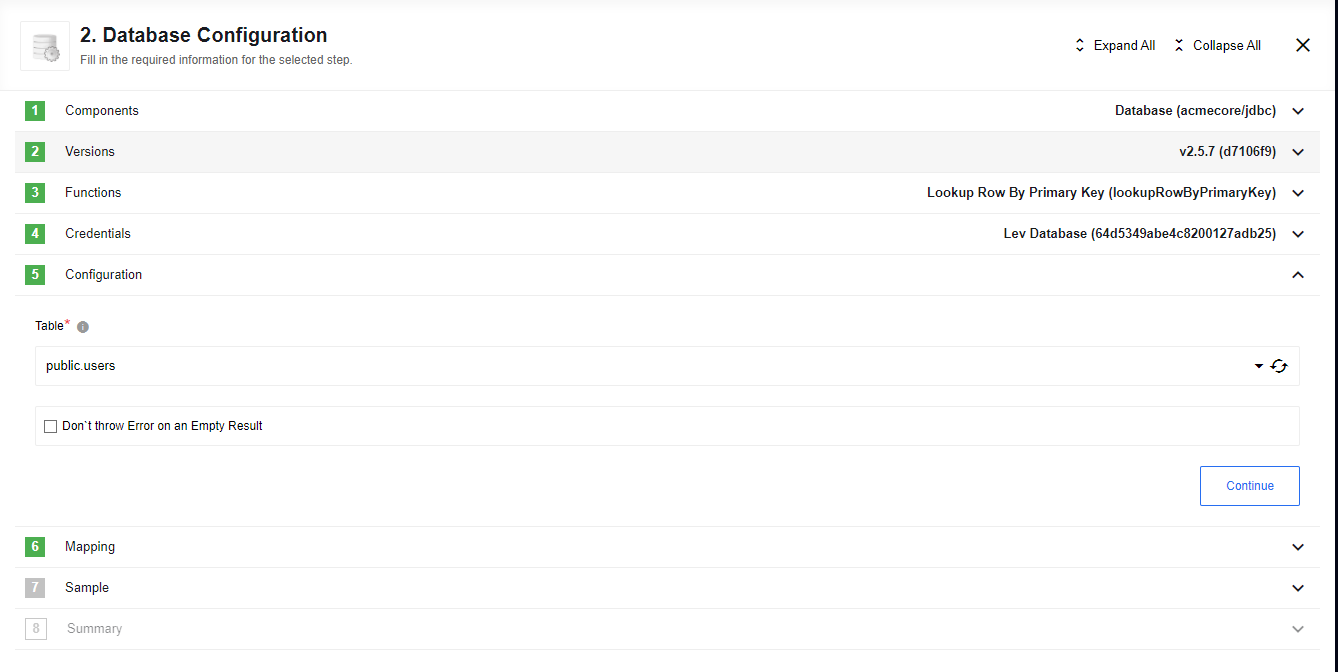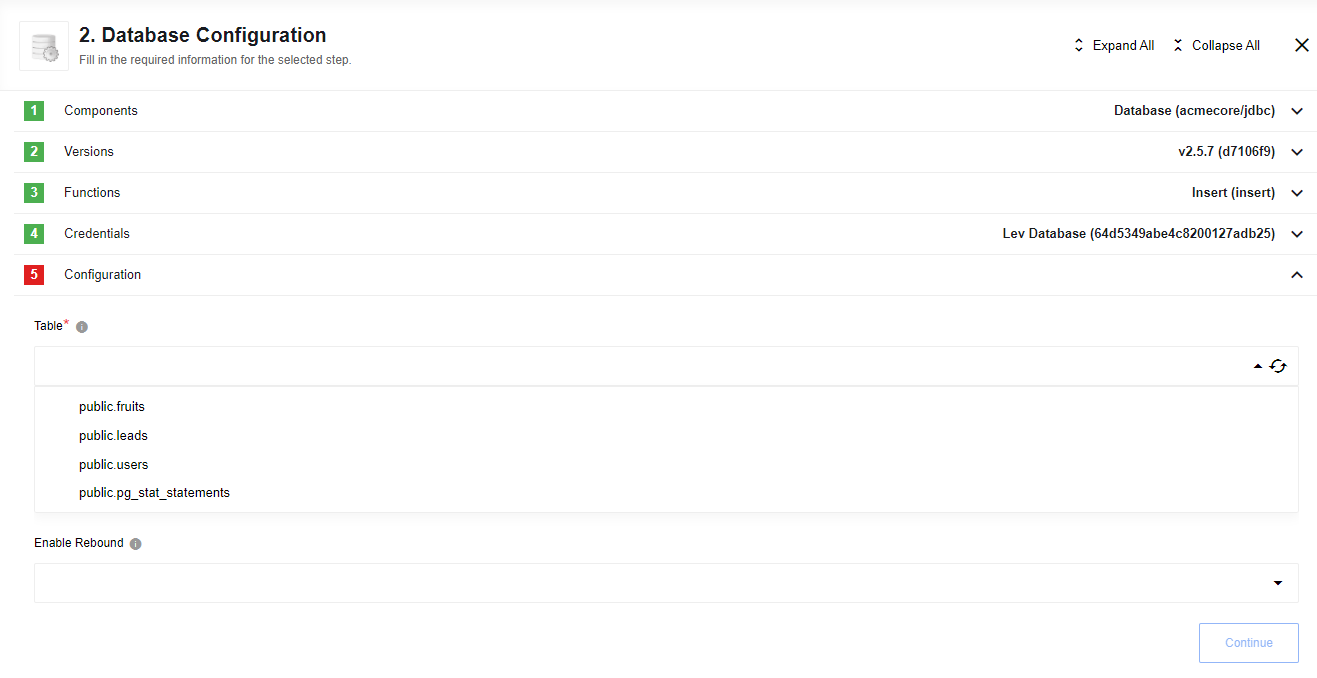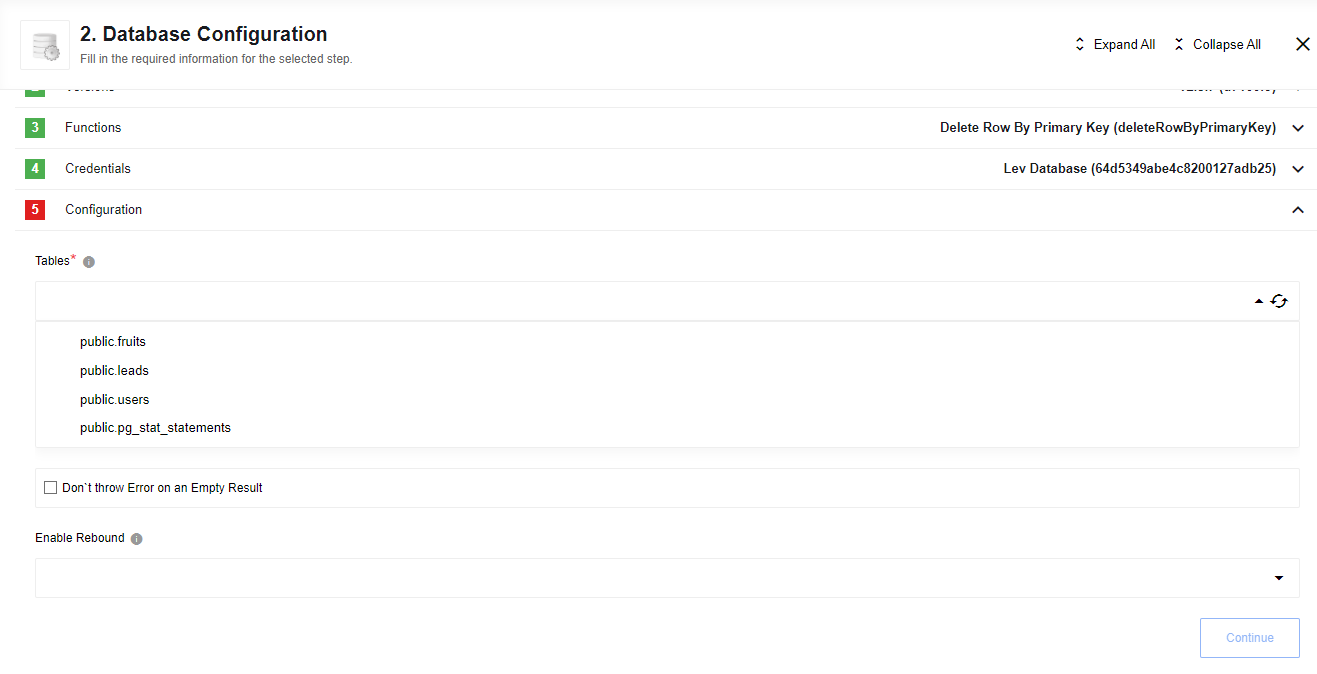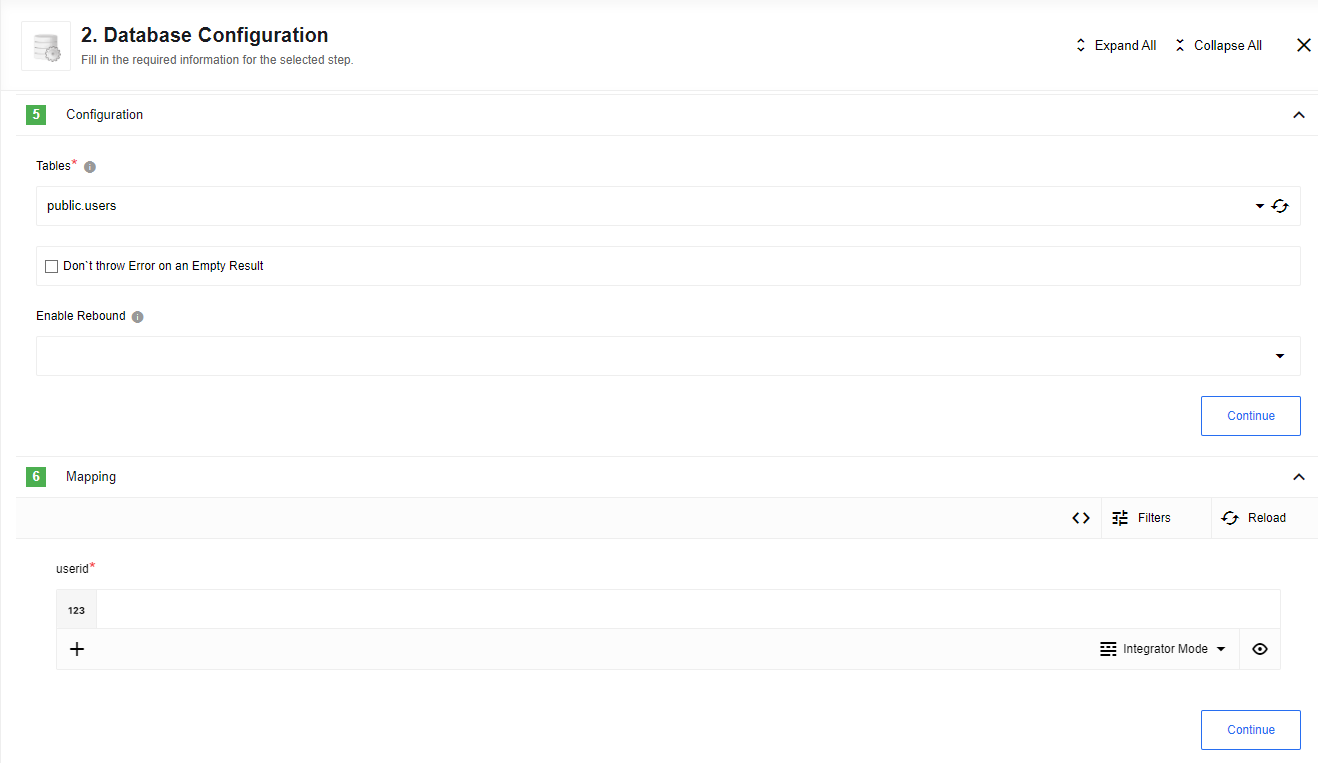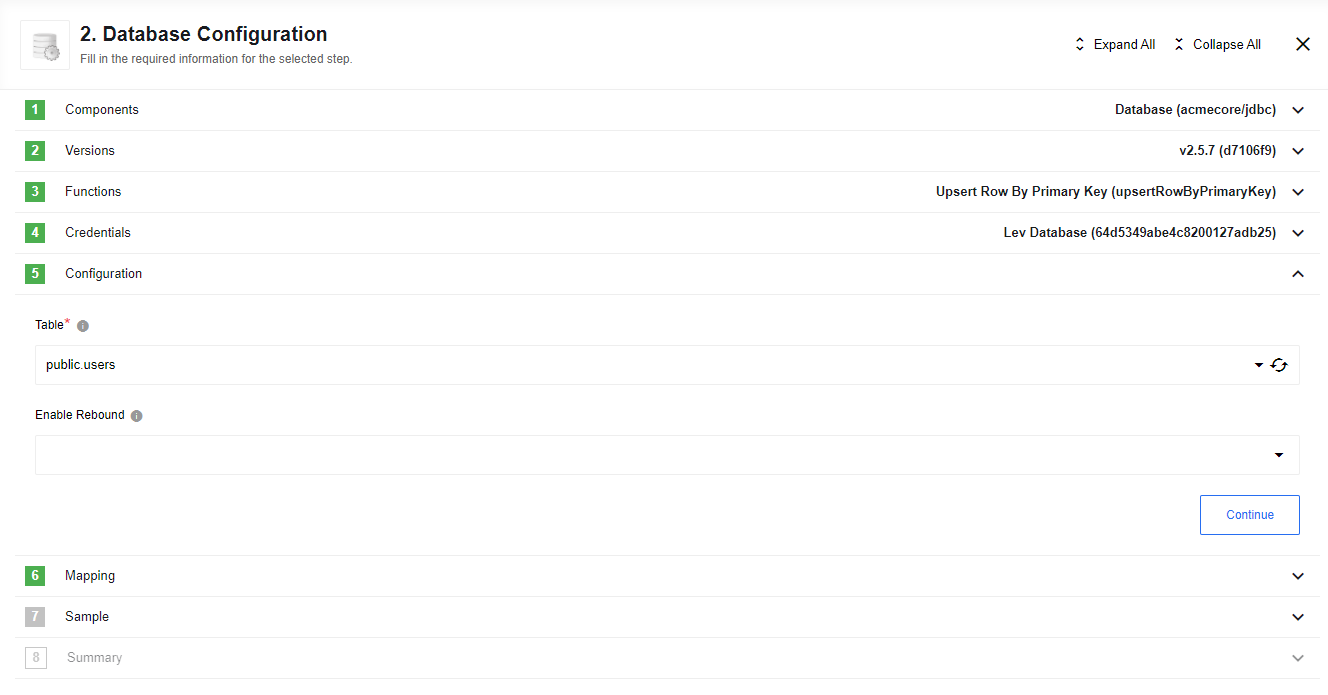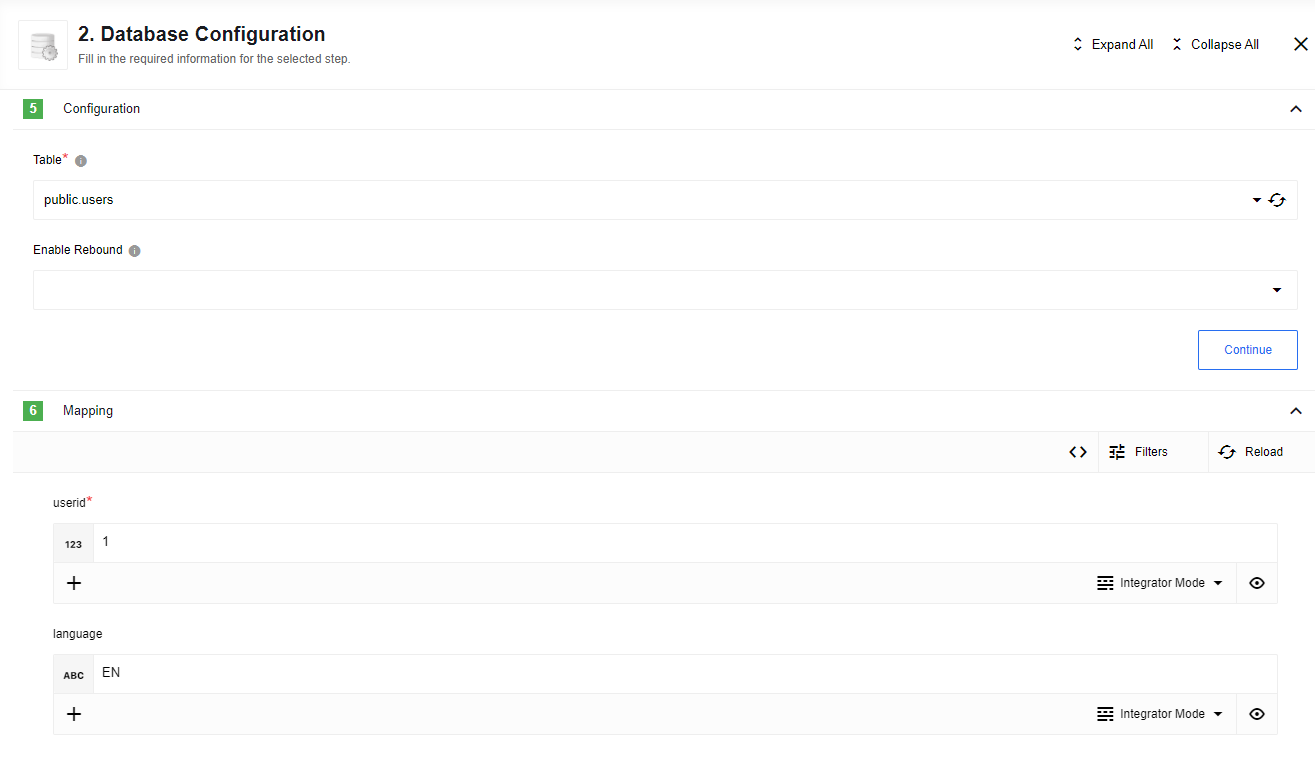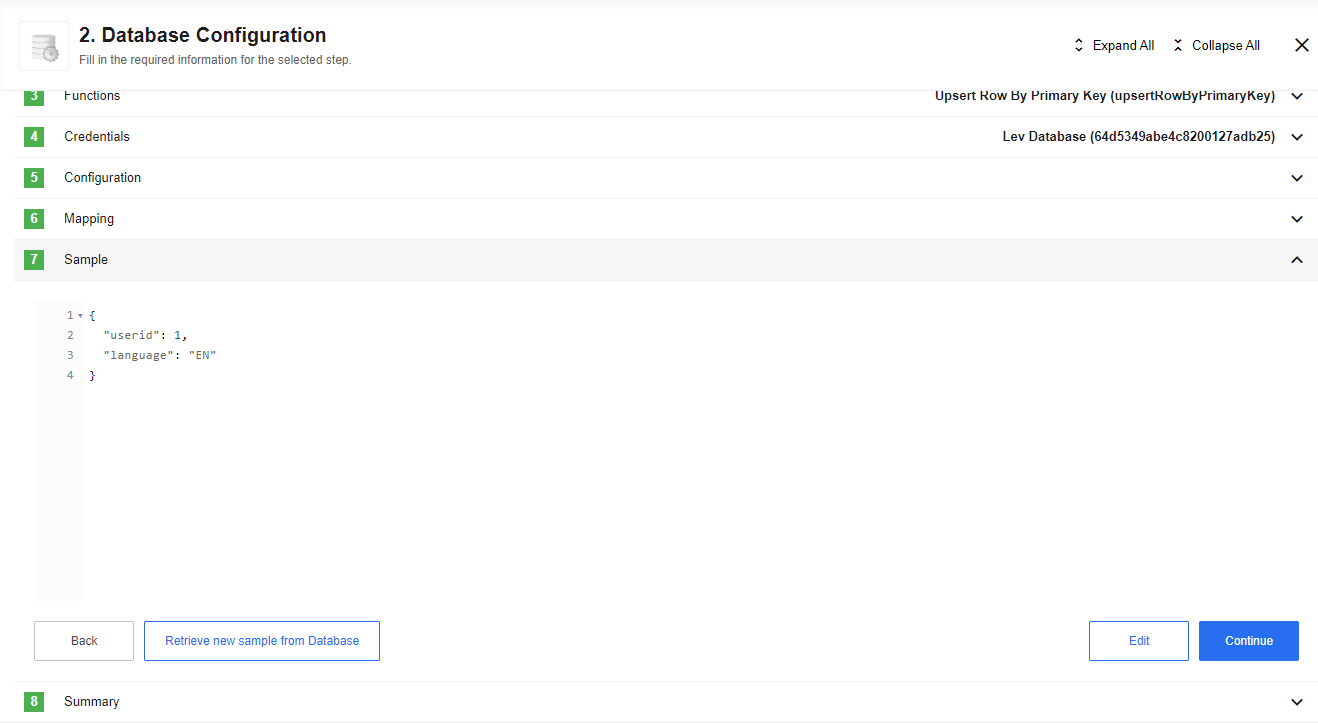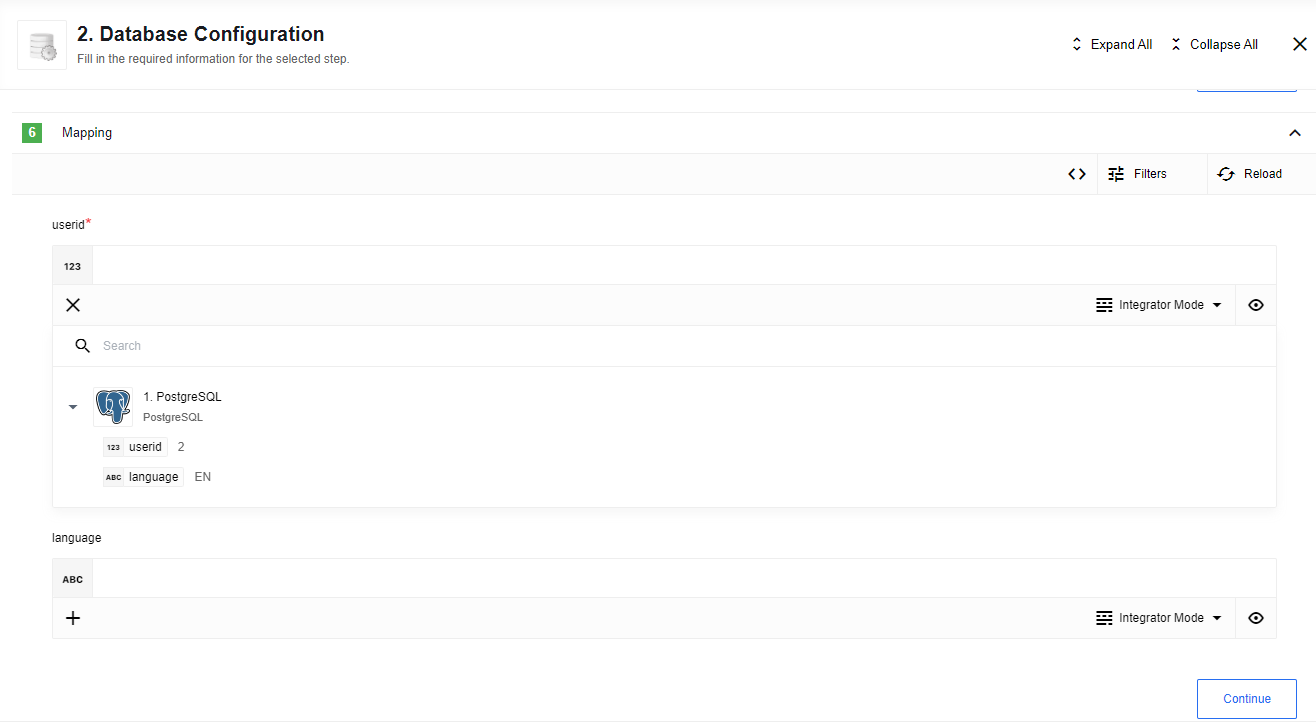JDBC actions
Select Query action
The action will execute an SQL query that can return multiple results, it has limitations on the query and suited only for SELECT type of queries.
In SQL query you can use clause variables with specific data types.
Internally we use prepared statements, so all incoming data is validated against SQL injection, however we had to build a connection from JavaScript types to the SQL data types therefore when doing a prepared statements, you would need to add :type to each prepared statement variable.
Please Note: prepared statement variables name could contain: any characters between a-z or A-Z, a digit and a character
_([a-zA-Z0-9_]).
For example if you have a following SQL statement:
SELECT
FROM users
WHERE userid = @id AND language = @lang
you should add :type to each @parameter so your SQL query will looks like this:
SELECT
FROM users
WHERE userid = @id:number AND language = @lang:string
Following types are supported:
stringnumberbigintbooleanfloatdate
Dropdown Emit Behaviour contains following possible options:
- Fetch all - a single message with an array
resultscontaining all the objects (rows) will be emitted. - Emit Individually - multiple messages (one message per one row) will be emitted.
- Expect Single - a single message with one result row will be emitted. If more than one row is returned the error will be thrown. A boolean input “Allow Zero Results” (defaults to
false) appears at input metadata. Iffalse- error will be thrown, else - the empty object will be emitted.
Execute custom query action
Action to execute custom SQL query from provided request string.
Note: SQL request will be executed according to chosen database JDBC specification.
Execution result returns as array of objects. If request contains multiple sql statements - them will execute inside one transaction. If one of statements fails, transaction will be rollbacked.
Input fields description
As input metadata, you will get one field named query to provide request string.
Query Samples:
Select:
SELECT name, size FROM stars
Update:
INSERT INTO stars values (1,'Taurus', '2015-02-19 10:10:10.0', 123, 5, 'true', '2015-02-19')
Posgresql batch multiple statements request:
DELETE FROM stars WHERE id = 1;
UPDATE stars SET radius = 5 WHERE id = 2;
Lookup Row By Primary Key action
The action will execute select query from a Table dropdown field, as criteria can be used only PRIMARY KEY. The action returns only one result (a primary key is unique).
Checkbox Don't throw Error on an Empty Result allows to emit an empty response, otherwise you will get an error on empty response.
Input fields description
As an input metadata you will get a Primary Key field to provide the data inside as a clause value.
Insert action
The action will execute INSERT command into the table from Table dropdown list the values specified in the body.
List of Expected Config fields
Enable ReboundifYesin case of deadlocks rebound message using Sailor rebound mechanism, number of rebound can be specified via environment variable:ELASTICIO_REBOUND_LIMITrecommended value 3.
Input fields description
Action contains only one configuration field Table - dropdown list with available table names.
Expected input metadata
As input metadata, you will get all fields of the selected table except for fields with auto-increment or auto-calculated property.
Expected output metadata
As output metadata, you will get execution insert result like:
{
"result": true
}
Delete Row By Primary Key action
The action will execute delete query from a Table dropdown field, as criteria can be used only PRIMARY KEY. The action returns count of affected rows.
Checkbox Don't throw Error on an Empty Result allows to emit an empty response, otherwise you will get an error on empty response.
Enable Rebound if Yes in case of deadlocks rebound message using Sailor rebound mechanism, number of rebound can be specified via environment variable: ELASTICIO_REBOUND_LIMIT recommended value 3.
Input fields description
As an input metadata you will get a Primary Key field to provide the data inside as a clause value.
Execute stored procedure action
This action calls stored procedure from selected DB Schema and Stored procedure name.
Input fields description
- DB Schema - a schema that contains a procedure to call. Must be selected from the dropdown list before
Stored procedurename. - Stored procedure - a name of a procedure to call, can be selected from the dropdown list.
Metadata generates automatically using IN & IN OUT procedure parameters for input, and OUT & IN OUT procedure parameters for output.
As array fields this action now support ONLY:
- CURSOR (as SQL type)
- REF CURSOR (as ORACLE type) The result for this type of fields would be returned as an array of JSON objects.
This action DOES NOT processing MSSql @RETURN_VALUE.
-
For MySQL component same to DATABASE is same to SCHEMA by it’s definition, so DB Schema dropdown is empty for MySQL.
-
MSSQL DB stored procedures has only IN and INOUT fields.
Usage case example
For Oracle DB procedure:
create PROCEDURE "INSERT_EMPLOYEE"(
i_emp_id IN EMPLOYEE.EMPID%TYPE,
i_name IN EMPLOYEE.EMPNAME%TYPE,
i_department IN EMPLOYEE.DEPARTMENT%TYPE)
IS
BEGIN
INSERT INTO EMPLOYEE (EMPID, EMPNAME, DEPARTMENT)
VALUES (i_emp_id, i_name, i_department);
END;
Component generates next metadata:
Upsert Row By Primary Key action
The action will execute SELECT command from a Tables dropdown field, as search criteria can be used only PRIMARY KEY, and execute INSERT command by PRIMARY KEY with specified field, if result does not found, else - action will execute UPDATE command by PRIMARY KEY with specified field. The action returns only one result row (a primary key is unique).
Select table from Table dropdown list,
specify input(userid field is in our case a Primary key) data and click “Continue”. You can also enable rebound mechanism if needed.
Retrieve sample result, click “Continue” and finish component configuration.
Input fields description
Enable ReboundifYesin case of deadlocks rebound message using Sailor rebound mechanism, number of rebound can be specified via environment variable:ELASTICIO_REBOUND_LIMITrecommended value 3.
As an input metadata you will get all fields of selected table. PRIMARY KEY is required field and other input fields are optional.
Create or update record action (Deprecated)
This action exists in JDBC component only for backward compatibility. Please use Upsert row by primary key instead.
Select action(deprecated)
This action exists in JDBC component only for backward compatibility. Please use NEW Select action instead.
